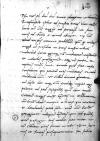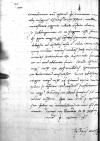Reverendissimo in Christo Patri, domino ⌊Ioanni Dei gratia episcopo Culmensi⌋ et postulato Varmiensi, fratri et amico carissimo et honorando
Proficiscente isthuc ad ⌊Prussiae terras⌋ hoc tabellario cum litteris regiis, non permisi, ut sine meis ad Vestram Dominationem Reverendissimam abiret. Cui nihil aliud in praesens occurrit scribendum, quam quod milites regii, ad praesidia in terris ⌊Russiae⌋ relicti, ⌊Valachiam⌋ ferro igneque non mediocriter vastarunt et ⌊Valachos⌋ profligarunt, atque cum praeda et captivis reversi sunt. Deinde quid fiet, nescio. Consulunt, qui peritiam artis militaris et notam ⌊Moldaviam⌋ habent, ut bellum hieme geratur cum hoste hoc, neque enim faciliori negotio cogi poterit ad pacem suscipiendam, quam hoc modo.
Ceterum ⌊regis Romanorum⌋ exercitus in ⌊Schlavonia⌋ non levem cladem accepit a ⌊Turcis⌋, qui victoria et bombardis potiti sunt, etiam nunc dicuntur expugnare reliquum exercitus, qui ad quandam arcem perfugit. Res accidit satis mira, ut cum Christiani omnibus ferme in rebus essent superiores et ⌊Turcos⌋ persequerentur, ita subito conciderint animi ipsorum, quod ⌊Cacianer⌋ et alii insignes exercitus ⌊regis Romanorum⌋ praefecti, nulla necessitate cogente, relicto exercitu clam se subduxerint et in fugam versi sunt, quos postea magna pars exercitus secuta, hincin[de] dilapsa ab hostibus caesa est, alia item, nempe XIIII milia, unius militis Itali cuiusdem comitis fortitudine et dexteritate servat[a] et in arcem abducta fuit. Ferunt exercitum ⌊regis Romanorum⌋ ex XX-ti milibus Germanorum et Bohemorum constitisse. Quae adversitas coegit ⌊regem Romanorum⌋ ad ⌊Gracium⌋, ⌊Styriae⌋ metropolim, se conferre et nostram profectionem in negotio matrimonii in aliud tempus, sed inc[ognitum] adhuc, transferre.
Opto, ut Vestra Paternitas Reverendissima sit felix et incolumis et me, quod faci[t], amet.


